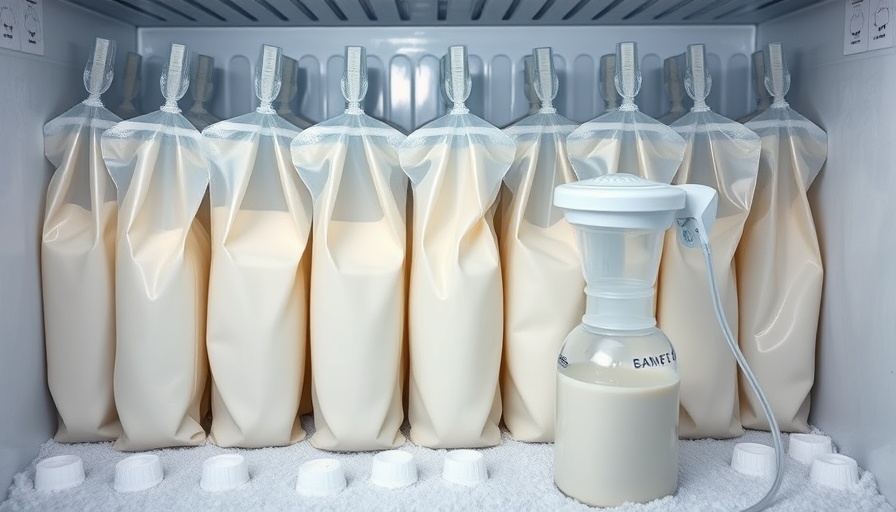
The Importance of Safe Breast Milk Practices
In the journey of motherhood, understanding how to safely pump, store, and thaw breast milk is vital for ensuring that your baby receives all the nutrients without any risk of contamination. Safe practices not only support a healthy feeding routine but also minimize the chances of harmful bacteria getting into breast milk.
Pumping: Tips for Best Practices
Pumping breast milk can be a blessing for mothers returning to work or needing to be away from their infant. Experts emphasize maintaining cleanliness to avoid introducing any bacteria to the milk. Always wash your hands before pumping and use clean, sterilized equipment. Choose a safe pump that is FDA-approved, ensuring that it meets health standards.
Storing Breast Milk Safely
Once pumped, how you store breast milk is equally important. Freshly expressed breast milk can be refrigerated for up to four days or frozen for up to six months. When freezing, use storage bags specifically designed for breast milk to avoid leaks. Remember to label your bags with the date to keep track of how old the milk is. Furthermore, never store breast milk in the door of the freezer, where temperatures can fluctuate.
Proper Thawing Techniques
Thawing breast milk must be approached carefully to preserve its nutritional benefits. Always thaw breast milk in the refrigerator or by placing the sealed bag or bottle in warm water. Avoid using a microwave as it can create hot spots that may burn your baby's mouth or degrade the milk's nutrients. Once thawed, any leftover milk should be used within 24 hours and never refrozen.
Conclusion and Further Information
Understanding the nuances of pumping, storing, and thawing breast milk can drastically enhance your breastfeeding journey. For more detailed information and personalized support, feel free to contact us for more details. Safe practices assist not only your health but also your baby’s well-being during their formative feeding stages.
 Add Row
Add Row  Add
Add 




Write A Comment